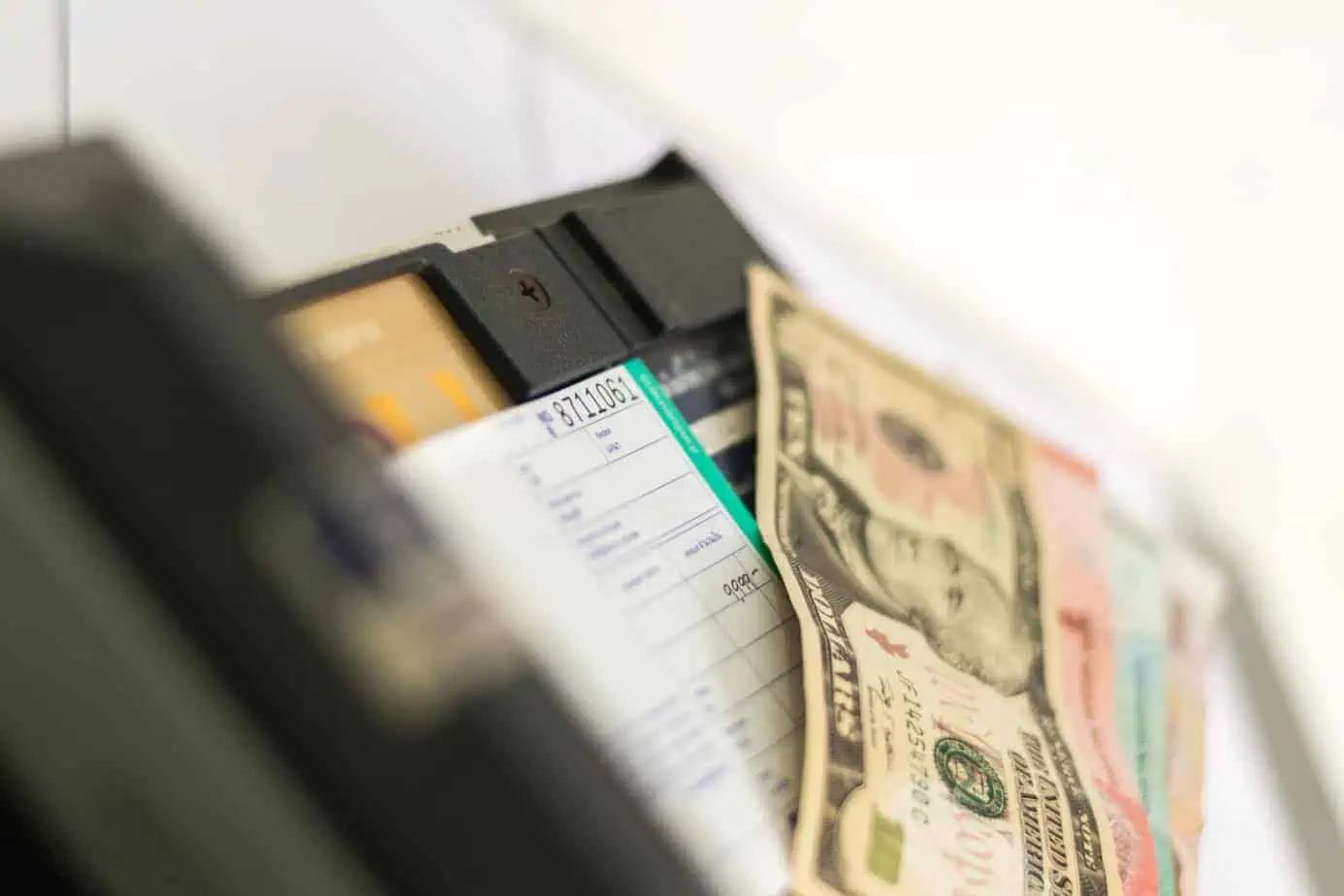A credit card imprinter is a manually operated, non-electronic device that prints the face of your credit card and transfers it to a duplicate slip. After successfully printing your credit card, you sign it, and the owner or dealer tears off the perforated edge, keeps the original copy (above) and provides you with the hard copy (below).
Credit card printers have earned a dubious reputation as one of the ever-growing ranks of obsolete or near-obsolete items such as cassettes and DVDs, landlines, and movie cameras. Most of these devices were about the same size and shape as a standard handheld adding machine. Most retailers and other businesses in the 21st century use some electronic barcode scanners. But some businesses still need a printer, especially when processing credit cards without a printer.
Today, several companies use manual credit card devices such as these printers for many purposes, such as when they take a customer’s order and later want or need to enter the card details at a virtual terminal. It also works as a backup option if your electronic credit card scanners fail or a power outage occurs.
A credit card printer essentially uses a small setup. Your card is secured with a piece of paper; Carbon paper can work if necessary. Typically there are three papers printed at once, so you can give the consumer and the issuer of the card a copy while you keep a copy to yourself. Old school card printers usually came with a personalized badge with your business information and the card data. Both of these features would appear on the same document out of convenience.
Other Concerns About Credit Card Printers and Manual Credit Card Transactions
Keeping a near-complete copy of a customer’s credit card information poses some security issues that you normally don’t need to fear.
There are no fancy two-factor security and encryption functions here. The retailer makes a physical copy of the customer’s credit card information for further processing. You don’t have to worry about your receipts being hacked, but they can be stolen or copied. Any security should work for your business practices, including details on how they will store this data.
You may want to keep the receipt for about 180 days, during which the customer can dispute the sale. If the receipts are no longer required, make sure that they are destroyed.
What does a credit card printer do?
A credit card printer prints your credit card on a duplicate slip. One copy will be given to you and the other kept by the business owner. As the cardholder, you sign the receipt and agree to pay for any goods you purchase during the transaction. The owner sends the information to the bank. The money is then transferred to the merchant account after the lot is processed. Credit card printers are still necessary for many situations, despite advances in recent years.
How Are Printers Still Used Today?
Many companies still use credit card printers for a variety of reasons:
Emergencies: If the company has a power failure, a printer is the only way to complete a credit card transaction.
Record Keeping: When a small business owner processes credit cards through a virtual terminal, they must obtain the consumer’s credit card information to enter into the system later. A printer is the most efficient way to do this.
Batch Processing: Small business owners often prefer to process all of their credit cards at once; printers allow the cashier to collect all of the relevant information from each customer and process a single batch at the end of the business day. It then moves to the owner’s merchant account in one transaction.
Printers and Technology: Records Versus Efficiency
Processing credit cards with an e-reader is probably the most efficient way of doing business. Printers are still useful when you only want to collect customer data for emergency purposes.
How Manual Imprinting Machines Work
Manual imprinting machines slide over a reader with carbonless paperwork. The content it reads contains records on the service provider. The machine can use this to review details like the customer’s credit score and the card expiration date. The imprint is created by using the impact of the raised letters and numerals at the face of the credit card onto the carbonless paperwork. Typically, the service provider returns one reproduction of the carbonless shape to the customer, preserving different copies for processing with the credit score card company.
Reasons to Use Manual Credit Card Imprint Machines
Although many traders have in large part deserted these imprinters, they nonetheless keep a few advantages. For instance, card imprint machines no longer require energy or an online connection with a modem or Internet link to the credit score card processor. In addition, the physical imprint of the credit card affords traders a degree of safety towards charge-backs. It can help highlight certain particular purchases that someone made, making it harder for someone to try and issue a charge-back. The design ensures the safety of the deal while preserving its general accuracy and security when working well.
Identity Theft Issues
A predominant downside to credit card imprint machines is they reproduce a customer’s whole credit card data, including its expiration date and even the CVV that appears on the front or back of the card. Careless dealing of paper receipts leaves clients susceptible to credit card fraud and identity theft. In 2006, the Federal Trade Commission imposed a regulation that called for traders to truncate the numbers of credit cards and to mask the expiration dates on their paper and digital receipts. In addition, many traders require clients to deliver the safety code placed at the lower back of the credit card alongside the credit card quantity and expiration date whilst processing transactions by phone or online connection.

